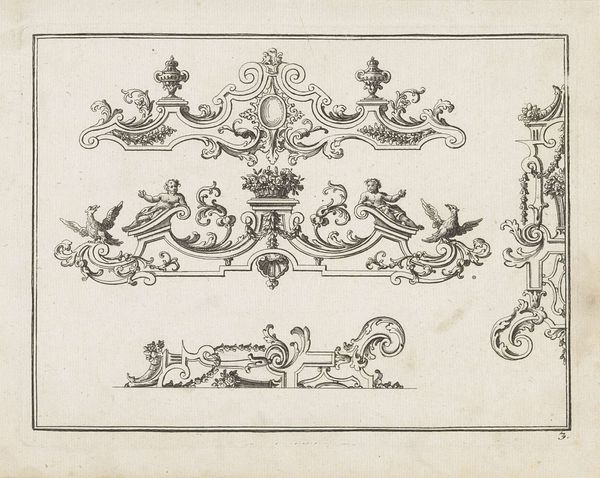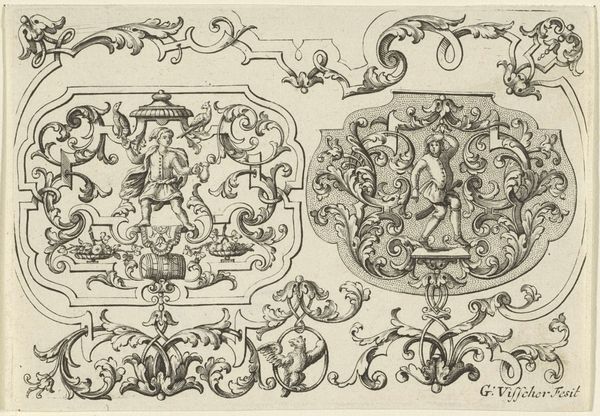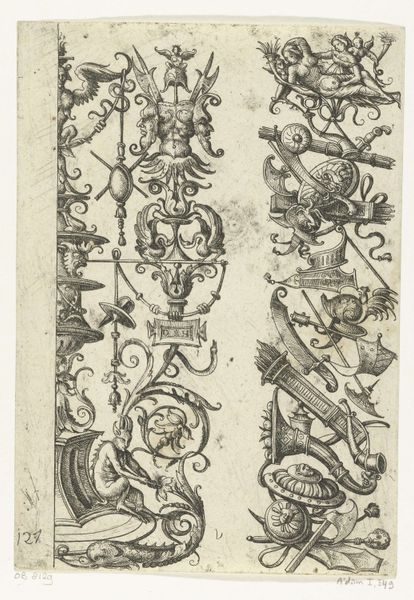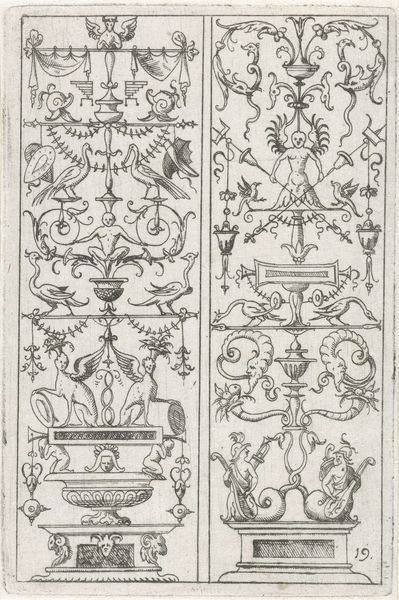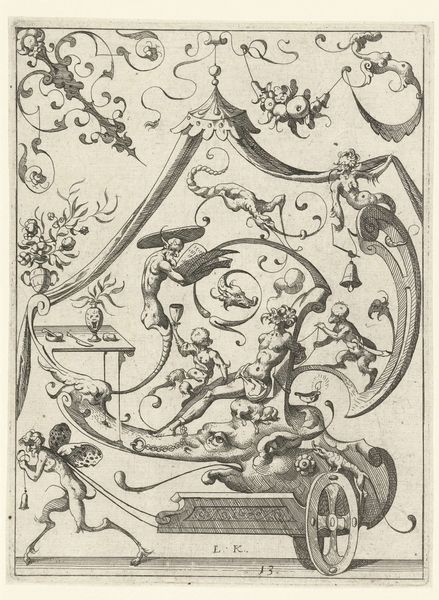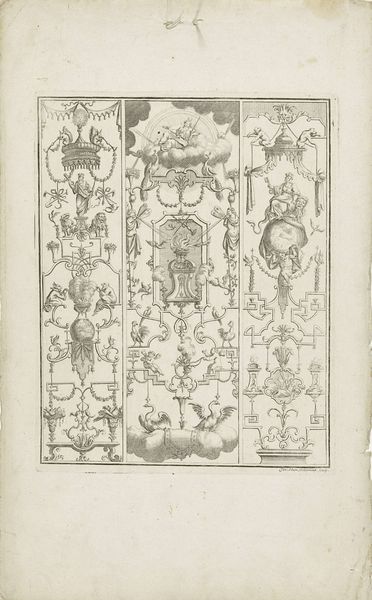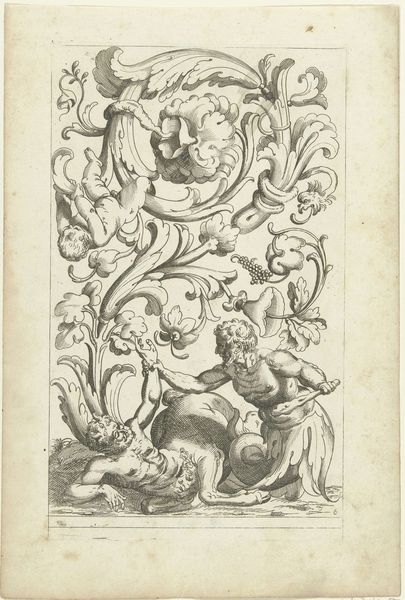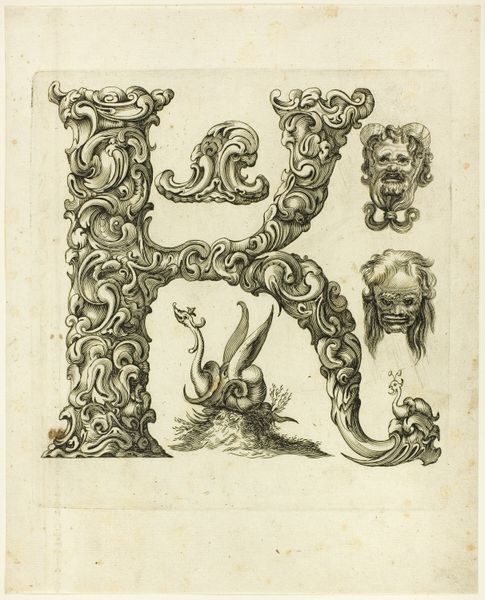
drawing, ink
#
drawing
#
ink drawing
#
allegory
#
baroque
#
figuration
#
ink
Dimensions: height 180 mm, width 107 mm
Copyright: Rijks Museum: Open Domain
Curator: Pieter Jansz. created this fascinating ink drawing, "Zes putti met wapenschilden," around 1640-1645. It depicts six cherubic figures surrounding empty shields. Editor: Immediately striking is the flowing dynamism. The putti are arranged asymmetrically, which injects an organic energy, in stark contrast to the rigid structure of heraldic shields. Curator: Exactly! While ostensibly meant as a template for coats of arms—a symbol of power and lineage in the 17th century—the joyous and playful rendering of the putti almost undermines the gravity associated with these heraldic displays. It speaks to a tension between secular authority and the prevailing cultural fondness for religious or allegorical imagery. Editor: Indeed, there's a tension. Look at the texture created by the ink wash! Jansz. masterfully renders the soft plumpness of the putti's flesh against the flatness of the shields. The cherubs feel alive, as if frozen mid-frolic around these emblems of societal structure. Curator: Jansz., who worked primarily in Haarlem, demonstrates here the increasing desire among the Dutch elite to integrate these playful allegorical elements into their own symbols of status. He's essentially selling the promise of heavenly endorsement alongside worldly prestige. Editor: It is an alluring sales pitch, framed as baroque fantasy. Considering how little we see of Haarlem art from the 1640s featuring the ink medium, how does Jansz.’s almost ornamental embellishments and layered approach stand out or contribute to Dutch drawing history? Curator: In Haarlem at this moment, history remembers its established, polished naturalism traditions. We might say Janz here almost rejects that aesthetic standard, preferring to offer this playful composition as aspirational status. The historical record notes how his embrace of pure figuration pushed his artistic style past periodization and further from public sentiment as war consumed popular imagery. Editor: So even the seemingly carefree imagery might mask deeper sociopolitical currents. Ultimately, I am seeing how Janz has achieved a unique blend here – fusing the material grandeur expected by the aristocratic buyer with an exuberance and fluidity of the human form and movement. Curator: A synthesis emblematic of its complex time. I’m interested to consider the audience perception, how they reconcile art with politics on a personal level at the moment they are made manifest on a surface as material as ink and paper.
Comments
No comments
Be the first to comment and join the conversation on the ultimate creative platform.
